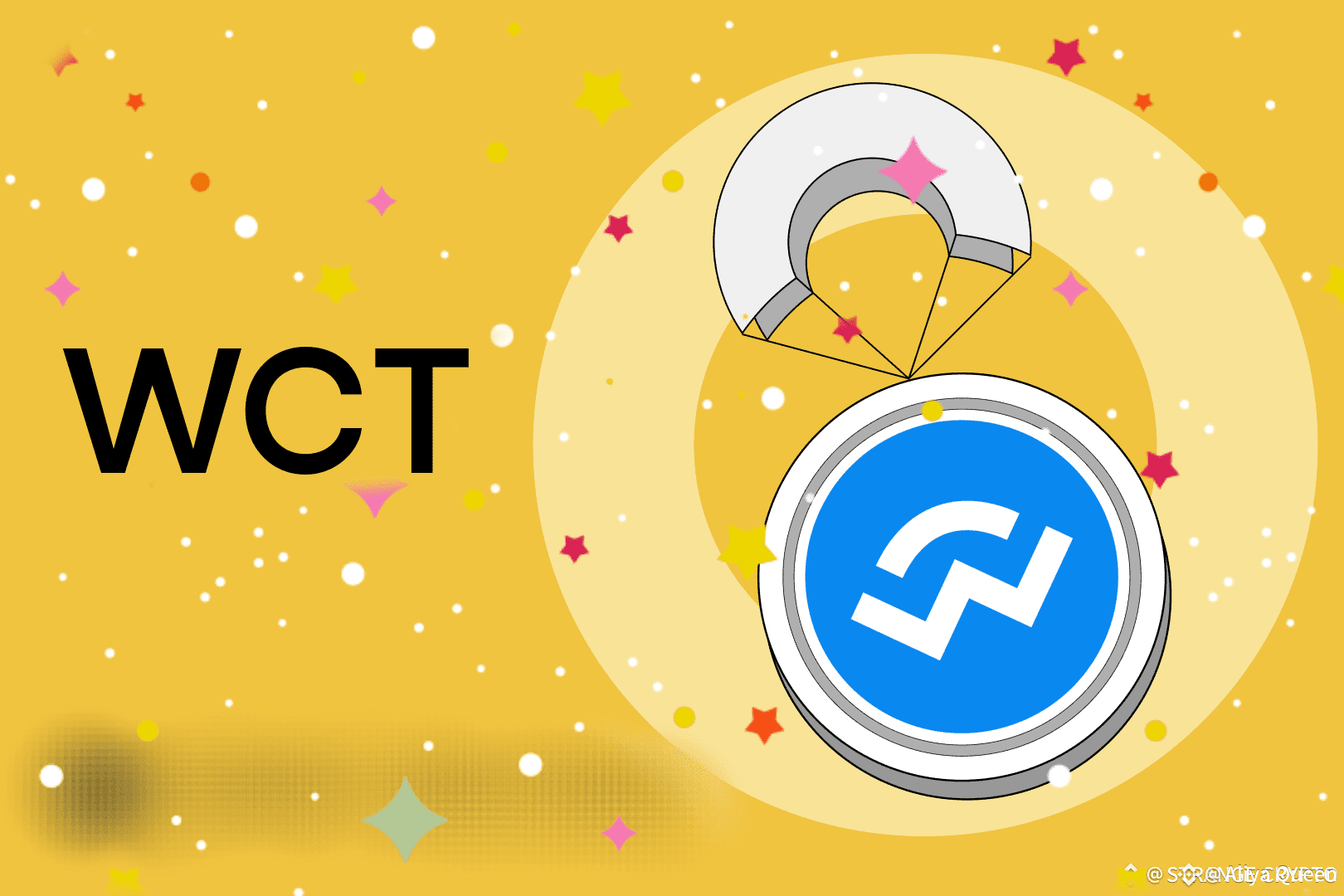@WalletConnect | #WalletConnect #WCT | $WCT
In the decentralized world of Web3, few innovations have become as foundational—and quietly impactful—as WalletConnect. What began as a simple solution to a persistent connectivity challenge has evolved into the invisible infrastructure behind the modern dApp experience. From bridging mobile wallets and browser-based dApps to becoming a critical communication layer, WalletConnect is now essential to how millions interact with blockchain.
Solving the Early Web3 Dilemma
In early Web3, users stored assets securely in mobile wallets while interacting with dApps on desktop browsers. The lack of a seamless bridge between the two led to frustrating user experiences, security vulnerabilities, and limited DeFi adoption. Browser wallets exposed keys; manual integrations deterred users. The need for a secure, intuitive protocol became urgent.
WalletConnect answered this call by enabling encrypted communication between mobile wallets and desktop applications, without compromising the security of private keys. It eliminated the UX gap, letting users scan a QR code and transact safely—redefining convenience and security in one step.
The Engineering Behind Seamless Connectivity
WalletConnect's architecture relies on an encrypted relay server that transmits messages between devices, ensuring private keys never leave the mobile wallet. This system uses a unique session key generated upon QR scan, creating a secure channel for real-time signing and transaction approval.
Unlike centralized systems, the relay has zero access to the contents it transmits. Even if compromised, user data and funds remain protected—a testament to WalletConnect's cryptographic integrity.
Its multi-chain support further enhances the user experience, enabling frictionless interaction across Ethereum, BNB Chain, Polygon, and dozens of other networks. Chain-specific complexities are abstracted away, giving users one interface for all blockchains.
WalletConnect 2.0 – A Protocol Reimagined
WalletConnect 2.0 is more than an upgrade—it’s a leap forward. Designed for scale, the new version supports multiple active sessions, smoother reconnections, and faster relay performance. It also introduces robust messaging infrastructure.
This allows dApps to send contextual information, alerts, or warnings directly to the wallet interface. Push notifications and interactive transaction flows make wallets more responsive and informative. The wallet becomes a secure command center, not just a passive signing tool.
On the developer side, 2.0 offers modular SDKs, simplified integration, improved debugging, and broader compatibility. It lowers barriers for building across multiple chains and ensures consistent, high-quality user experiences.
Network Effects & Ecosystem Growth
WalletConnect’s adoption speaks volumes. With 500+ wallet integrations and 3,000+ dApps supported, it has achieved critical mass. The result: a positive feedback loop where developers benefit from immediate interoperability, and users enjoy broad access with minimal friction.
This ubiquity creates significant network effects. New wallets gain utility by supporting WalletConnect, while dApps instantly become accessible to a massive user base—lowering switching costs and solidifying WalletConnect’s leadership.
Transforming Web3 UX
By simplifying a once-complicated interaction, WalletConnect has made Web3 feel intuitive. The now-familiar QR scan flow is a stark contrast to the clunky wallet extensions and manual key imports of early DeFi.
This ease of use has welcomed millions of new users, accelerating the pace of blockchain adoption. It empowers users to explore NFTs, yield farms, games, and DAOs with confidence. As a result, WalletConnect has played a pivotal role in DeFi’s exponential growth.
Institutional Confidence
WalletConnect’s secure and scalable infrastructure has earned the trust of institutional players. Enterprises building for thousands of users rely on its reliability and performance to deliver mission-critical blockchain services.
The protocol's design—focused on privacy, security, and standards compliance—meets the expectations of regulated institutions, making it a cornerstone of enterprise blockchain adoption.
Beyond Wallets: Messaging, Identity, Notifications
The next chapter of WalletConnect extends far beyond wallet connectivity.
WalletConnect Chat brings encrypted, decentralized messaging—enabling secure communication between users, dApps, and developers.
WalletConnect ID aims to provide decentralized identity systems, replacing vulnerable password logins and centralized social authentication with sovereign identity control.
Push Notifications deliver real-time alerts, security updates, and blockchain events across wallets and chains—giving users a unified, responsive experience.
Together, these features turn WalletConnect into a full Web3 operating layer—powering communication, identity, and engagement.
Economic Model & $WCT Token Potential
As usage surges, the question of value capture becomes increasingly relevant. While WalletConnect remains free infrastructure today, potential monetization models include premium services, transaction routing fees, and staking for security or governance.

A native token ($WCT) could serve multiple roles—governing protocol upgrades, funding development, and rewarding early contributors. However, tokenomics must balance decentralization with technical stewardship to avoid the pitfalls seen in other protocol launches.
Community & Governance
The WalletConnect community has grown organically—driven by developers, users, and wallets who integrated out of necessity and stayed for the performance. As expectations rise for community ownership, governance frameworks become essential.
Future decisions—around token distribution, protocol changes, or strategic partnerships—must reflect both technical integrity and community input. Governance must empower stakeholders without compromising on WalletConnect's security-first ethos.
Competitive Landscape & Strategic Vision
While WalletConnect holds the dominant market share, competition is inevitable—from alternative protocols to Web2 giants entering the wallet space. Staying ahead means investing in features that matter: faster connections, richer interactions, identity, and messaging.
Strategic partnerships with browsers, mobile OSs, or hardware manufacturers could expand WalletConnect’s reach to new users. But preserving decentralization in these relationships is key to maintaining trust.
Road Ahead
WalletConnect is building beyond the wallet—toward a future where users can sign, message, authenticate, receive alerts, and interact with dApps across all chains, all from one secure interface.
With the upcoming roadmap focusing on decentralized communication, Web3-native identity, and real-time UX improvements, WalletConnect is positioned not just as a protocol, but as an essential layer of the Web3 stack.
